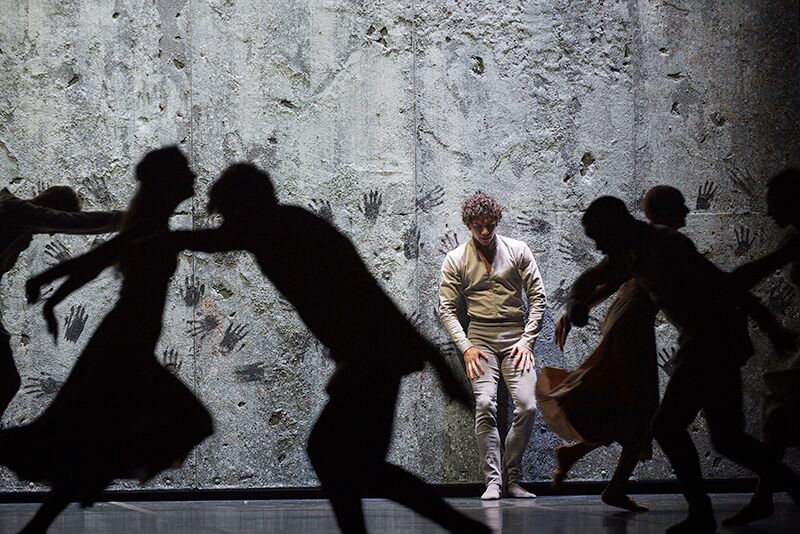
There are times when the best of everything combines to produce something exceptional. Akram Khan’s spellbinding Giselle is a fine example. The reimagining of this classic tale of love and betrayal has been fuelled by the collective creative genius of a dream team. I would challenge anyone to find better this season.
An emotional performance by English National Ballet’s Artistic Director Tamara Rojo CBE in the lead role, with scintillating support from James Streeter and Cesar Corrales as the would-be suitors Albrecht and Hilarion, swept this performance to a giddy level.
Stage and costume design from the hand of Tim Yip, the Academy Award-winning Art Director of Crouching Tiger, Hidden Dragon fame, complimented Khan’s desire for a more visceral telling of a previously pastoral interpretation. No tutus or tights here, Yip’s simple lightweight dresses and men’s trousers gave the ensemble a much more contemporary look. Some of his creations for the uber-rich would have made the fashionistas at Louis XIV’s court look underdressed! His extraordinary rotating wall feature, enhanced by the dramatic lighting effects of Mark Henderson, stood as a character almost in its own right – serving as metaphor for imagined and real divides between the living and the dead, and the have-nots from an elite.
The English National Ballet Philharmonic Orchestra under the baton of Gavin Sutherland played a key part in building excitingly ominous themes and poignant atmospheres. Vincenzo Lamagna’s adapted score retained leitmotifs from composer Adolphe Adam’s original, but pumped it with 21st century adrenalin. Daringly, passages were allowed where silence was punctuated only by human breath and the sound of shoes en pointe. The percussive effects in particular, working with excellent passages from the cellos and violas, and later the horn section, locked with the dancers movements in seamless synchronicity.
Khan’s signature style was evident from the start of this production with Corrales instantly eye-catching as Hilarion. In whiplashed body contortions and angular arm and finger movements the influence of North Indian Kathak coursed through the dancer’s veins. Never working with pointe before, Khan’s ability to meld classical dance with contemporary and ethnic influence was a triumph, particularly in Act II when the eerie avenging female souls, ‘the Wilis’, led by the superb Stina Quagebeur as their Queen, wafted across the stage meshing in two lines to form a fleeting cross – a mesmerizing effect. In Act I, figures are seen scurrying, cantering or leaping in an animalistic rush, all the more memorable for being in silhouette against Yip’s great wall.
Essentially the bones of the story remain. Giselle falls for Albrecht, a rich guy disguised as an ‘Outcast’ of which Giselle is one – a disenfranchised class of workers surviving on the other side of a daunting wall, built to separate them from the protected rich. What she doesn’t know is that Albrecht has already been betrothed to the very privileged Bathilde (Begoña Cao), sumptuously attired in glittery black. Hilarion competes for her attention without success. When Albrecht’s real identity and status is revealed, Giselle dies of a broken heart. She is then summoned from the grave to join the Wilis to seek vengeance. Her enduring love for Albrecht wins the day, but is too late to salvage a union in the flesh. In the moments leading to her death Khan shows utter mastery of his medium. The entire company conjoins to become as a single beating heart with the dying Giselle at its epicenter – unforgettable theatre, extraordinary dance. ★★★★★ Simon Bishop 19th October 2016

